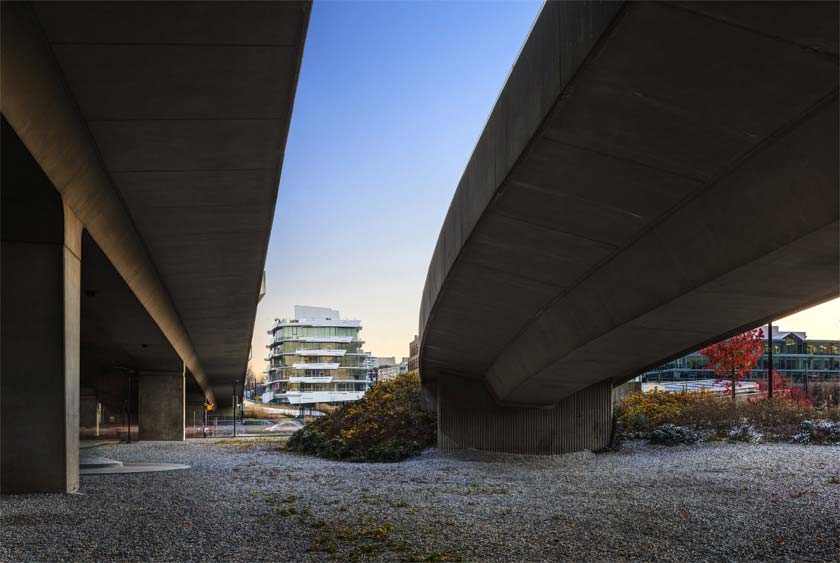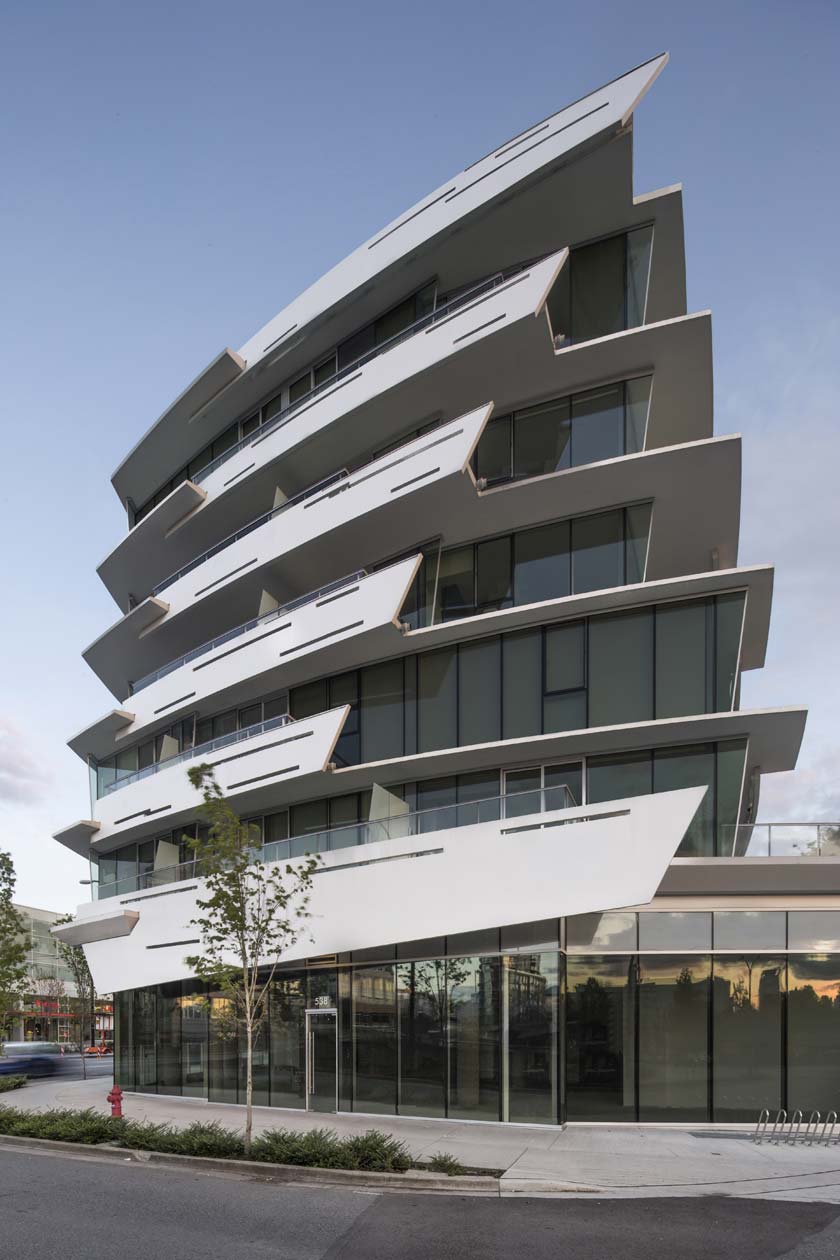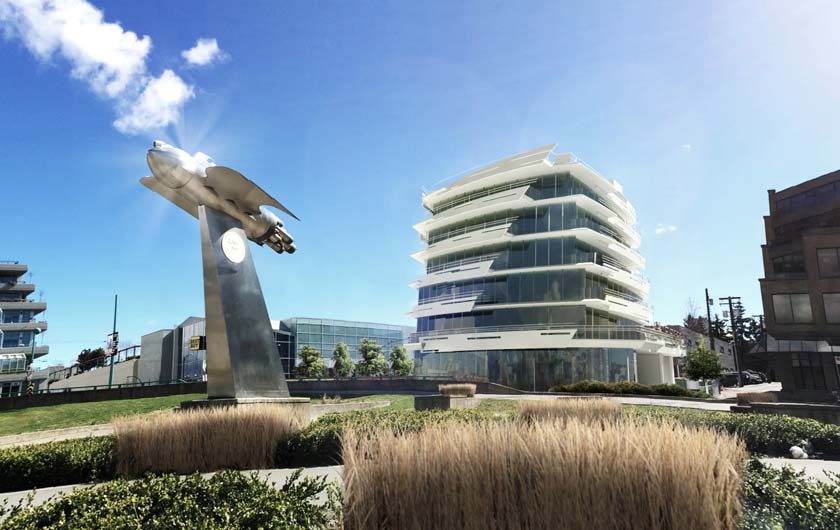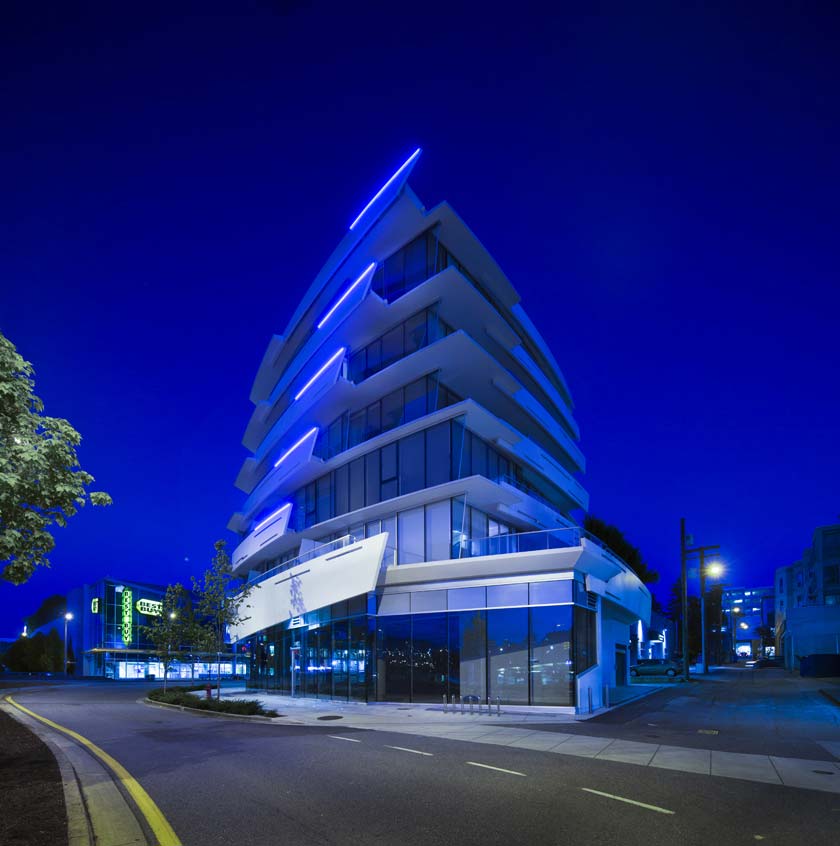
A rare opportunity on a once-forgotten site, this commercial/residential mixed-use project presents
an avant-garde building form of cascading post-tensioned concrete cantilever floors and a layered
screen façade that reflects light and distorts the boundaries between interior and exterior. This
project boasts a number of design “firsts” for the architectural typology. The dynamic free-form
steel spandrels emphasize the vortex energy of the bridgehead site. The light reflecting color was
chosen to increase light penetration to the interior on overcast days typical in Vancouver.

Spandrels are shaped and engineered to maximize passive solar shading, while simultaneously working as privacy screens – blocking light and noise from the adjacent bridge traffic and bustling pedestrian walkways below. Named one of the 15 best buildings in Vancouver by Planning Director Brian Jackson, this iconic project perched on the southwest end of the Cambie Street Bridge, stands as the symbolic gateway to Vancouver’s uptown.

DYNAMIC: Building vocabulary is sweeping and spiraled to capture the energy created by the adjacent bridge ramps. Edges are curved and fragmented to evoke the idea of movement, as if the energy of the street itself is peeling the surfaces of the building apart. The building turns its corners in prow-like forms that track sun-angles and provide passive horizontal and vertical sun-shading.

RESPONSIVE: Arno Matis Architecture used its ‘REsponsive’ design approach to address the complex architectural and urban design challenges on this tight and oddly shaped site. Analyzing commute patterns and other contextual forces impacting the site, South Creek Landing’s acts as a design ‘response’ to these external forces; intricately sculpted massing maximizes build able square footage; landscaping & retail activate the pedestrian realm; a once-forgotten lot brings new life to Cambie’s skyline inviting neighboring skytrain commuters to slip along its plains.

VORTEX FAÇADE: Bent by the vortex energy of the bridgehead infrastructure at its location, the form of the 6th & Cambie project organically rotates to respond to light and views. Its setback and landscaped street edges facilitate pedestrian movement to the adjacent transit station. Part vertical solar shade and part privacy screen, the custom curving spandrels of the project are precisely defined and angled to respond to the solar exposure of the site. The building form is emphasized through a light art installation by Tamar Frank that recalls the frenetic movement of head and taillights. Building materials are architectural concrete, metal and glass, a deliberately spare and timeless material palette to express a homogenous yet dynamic form.
Project Details:
Location: Vancouver, Canada
Type: Commercial – Residential
Site area: 643.73 sq m
Footprint area: 398.83 sq m
Architects: Arno Matis Architecture
Photographs: Michael Elkan, Ed White


